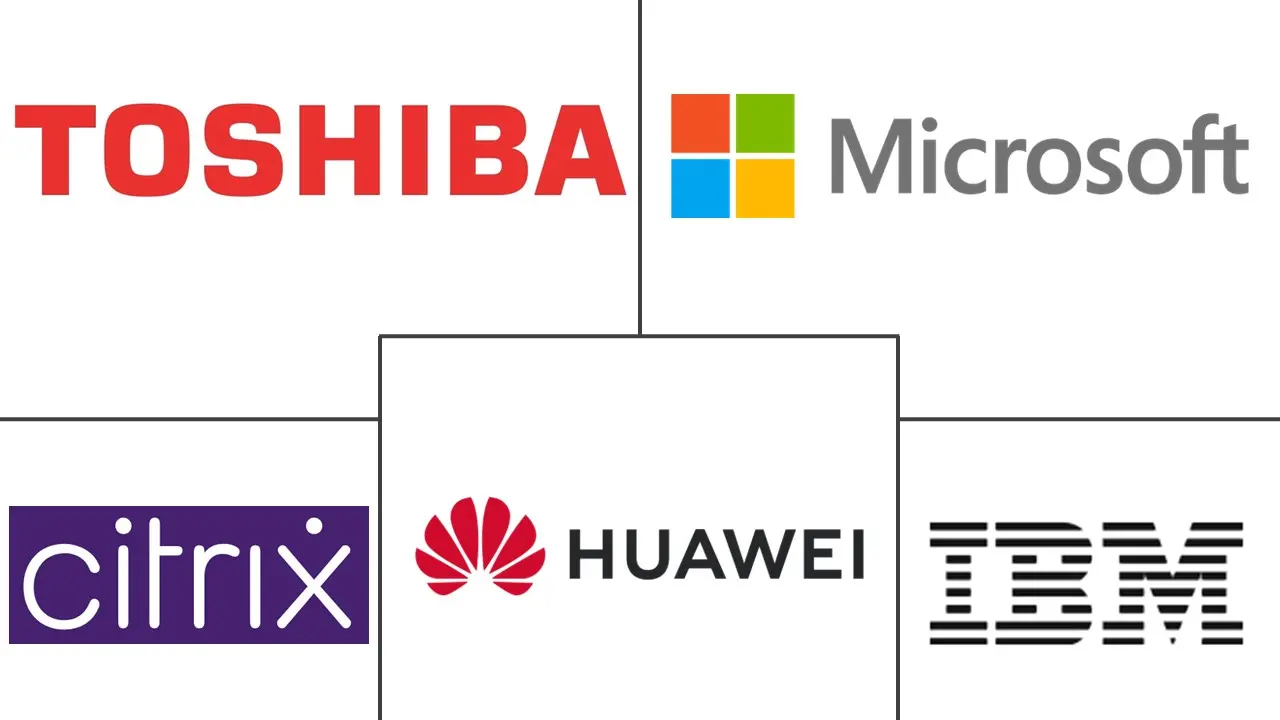Desktop Virtualization In Energy Sector Market Size and Share
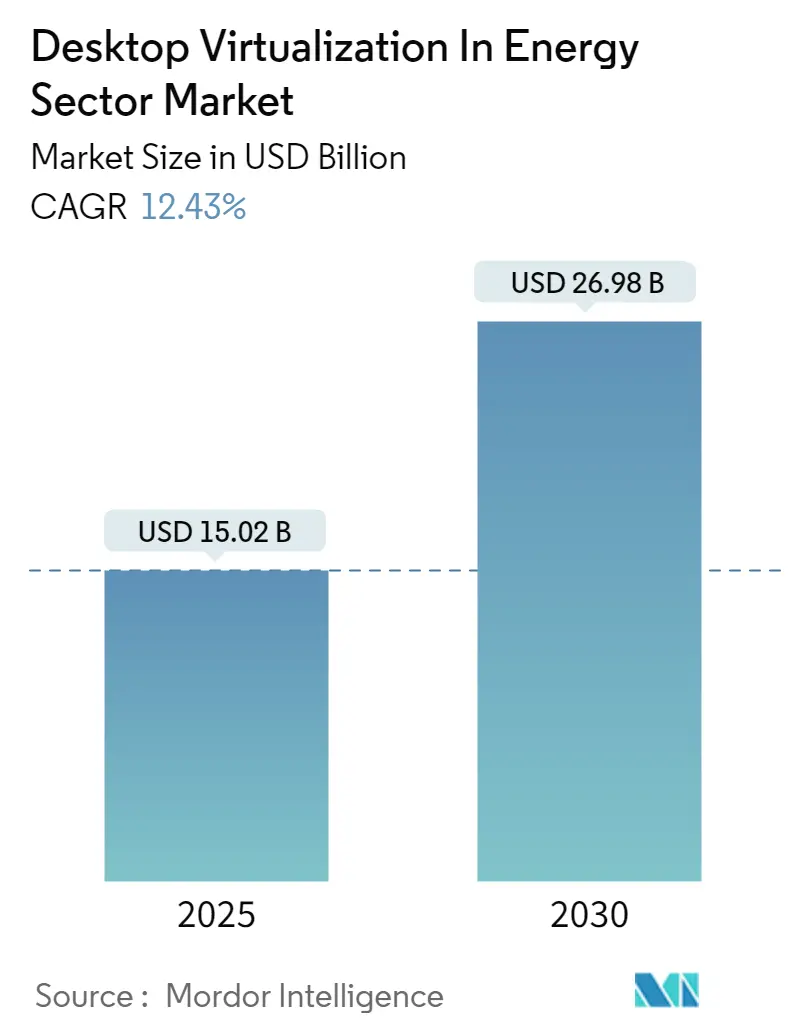
Desktop Virtualization In Energy Sector Market Analysis by Mordor Intelligence
The Desktop Virtualization In Energy Sector Market size is estimated at USD 15.02 billion in 2025, and is expected to reach USD 26.98 billion by 2030, at a CAGR of 12.43% during the forecast period (2025-2030).
The energy sector often involves remote operations and monitoring of infrastructure. Desktop virtualization allows employees to access critical systems and data securely from remote locations, improving operational efficiency.
- The increasing energy demand necessitates energy companies to reduce operating costs and streamline business processes. By centralizing desktop environments and data on secure servers, desktop virtualization can enhance data security and compliance, which is crucial in the energy sector due to sensitive information and regulatory requirements.
- Cloud-based desktop virtualization allows energy sector employees to access their virtual desktops and critical applications from anywhere with an Internet connection. Cloud-based solutions offer robust disaster recovery capabilities. In a disaster or system failure, energy companies can quickly recover their virtual desktop environments and data from off-site cloud backups.
- Energy companies often need to respond quickly to changing operational requirements. Whether deploying a team to a remote drilling site or providing engineers with access to data from a different location, desktop virtualization offers the flexibility to adapt to these changing circumstances.
- Infrastructural constraints compel the workers to work traditionally. The energy sector already has complex and established platforms that are on-premise, and moving them to the cloud is time-consuming. Concerns about the security and privacy of cloud-based worker data are expected to hamper the market growth.
Global Desktop Virtualization In Energy Sector Market Trends and Insights
Cloud Deployment Mode Segment is Expected to Hold Significant Market Share
- Various energy sector organizations are using cloud computing to reduce businesses' operational costs. Easy implementation, accessibility, and flexibility of cloud hosting are expected to drive organizations' adoption of cloud computing. Cloud deployment includes service models, such as Desktop-as-a-Service (DaaS), Workspace-as-a-Service (WaaS), and Application/Software-as-a-Service (SaaS). Desktop virtualization is offered as a service over cloud networks, with all computing and supporting infrastructure hosted on the service provider's end in the cloud deployment mode, which makes the migration of data between working environments easy.
- Application streaming over the cloud is gaining popularity in the energy sector industry, with many businesses choosing standalone application services. Cloud is preferred across energy sector industries, providing better scalability, data management, and cost savings.
- In 2023, China, the U.S., and Brazil topped the list for installed renewable energy. China led in renewable energy installations, boasting a capacity of approximately 1,453 gigawatts. The U.S. came in second with a capacity of about 388 gigawatts. Utilizing renewable energy is a crucial measure in tackling climate change and lessening the impacts of this occurrence.
- Cloud deployment offers the flexibility and scalability required to accommodate the increasing computing demands of expanding hydropower capacity. It allows organizations to provision and de-provision virtual desktops and resources as needed, aligning with the project's growth.
- Cloud deployment of virtual desktops enables remote access to critical applications and data. Engineers operate, and managers can securely monitor and manage hydro projects from anywhere with an internet connection, improving operational efficiency and reducing the need for on-site personnel. Moreover, in August 2022, the Government of India announced the development of two hydropower projects in Nepal, namely the West Seti Hydropower Project and the Seti River Hydropower Project. The total cost of these projects is expected to be around USD 2.4 billion. Such developments provide opportunities for the cloud deployment mode of the desktop virtualization market in the energy sector.
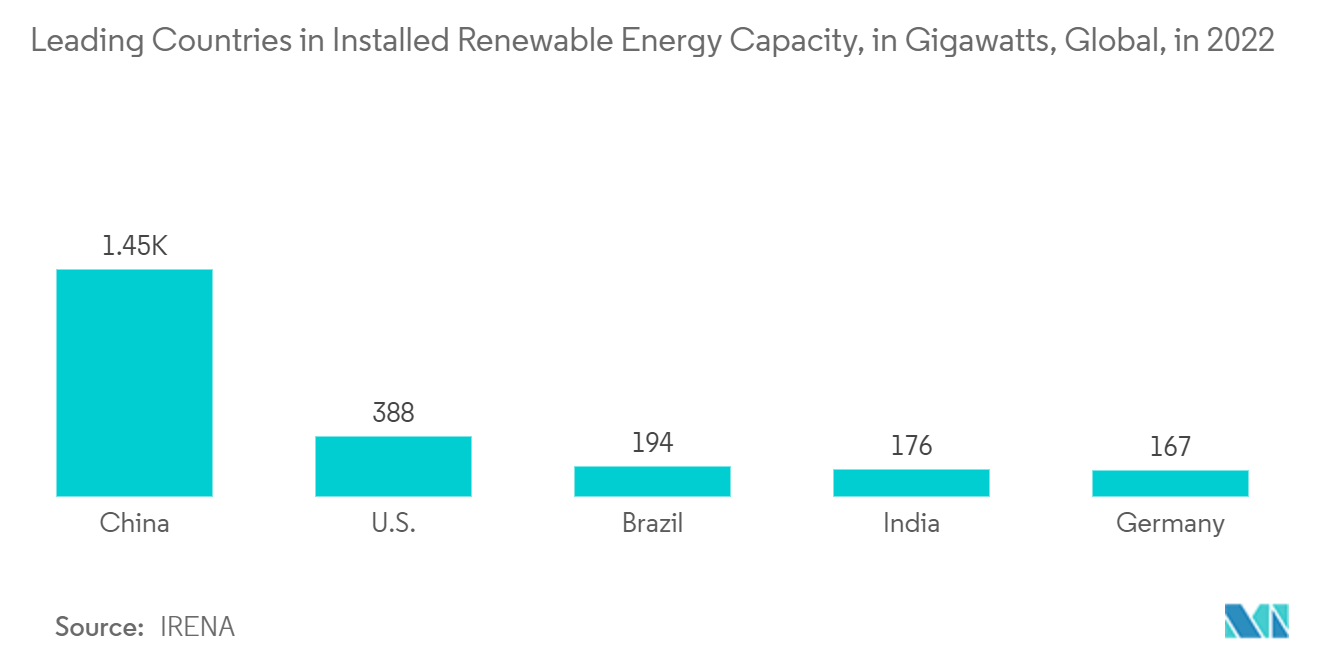
Asia Pacific is Expected to Hold Significant Market Share
- Organizations in the Asia Pacific region companies early adoption of new technologies and investments in energy sectors are the primary driving force behind global dominance. Large cloud service providers play a significant role in the region's growth of cloud-based desktop virtualization deployment. The energy companies in the Asia Pacific region further transmit, distribute, and store energy through complex infrastructure networks supported by emerging products and services such as smart grid technologies.
- As of 2022, China is the global leader in renewable energy deployment. The country's total renewable energy capacity reached 1160.8 GW in 2022, representing an increase of approximately 13.4 percent compared to the previous year. Hydropower, solar, and wind are the major renewable energy sources in the country.
- The Government of India has set a target of installing 175 GW of renewable energy capacity by FY 2022, including 100 GW from solar, 60 GW from wind, 10 GW from bio-power, and 5 GW from small hydropower. Moreover, the Indian Ministry for New and Renewable Energy expects investment of USD 15 billion in renewable energy, electric vehicles, manufacturing of solar equipment, and green hydrogen in 2022.
- In addition, the Government of India is investing heavily in renewable energy to reduce carbon emissions, undertaking various large-scale sustainable power projects, and promoting green energy heavily. As of 2021, India's installed renewable energy capacity stood at 147 GW, and the country is targeting about 450 Gigawatt (GW) of installed renewable energy capacity by 2030, which will directly aid the market.
- Japan's government has also targeted reducing carbon emissions to 50 percent by 2030 and achieving carbon neutrality by 2050. In September 2022, Green Power Investment (GPI) chose GE Renewable Energy as the provider for the Fukaura Wind Farm in Fukaura Town, Nishi Tsugaru District, Aomori Prefecture, Japan. The project, which will include 19 units of GE's 4.2-117 onshore wind turbines, is GE's third in Japan.
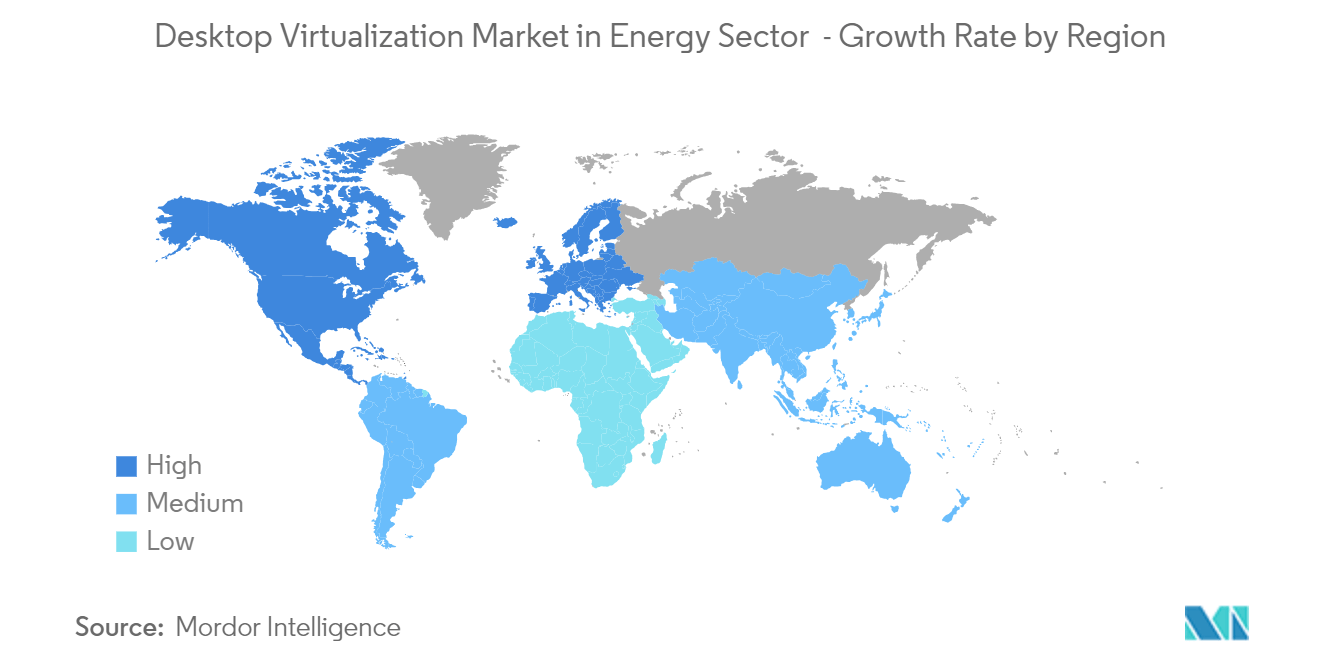
Competitive Landscape
The desktop virtualization market in the energy sector is fragmented, with the presence of major players like Citrix Systems Inc., Toshiba Corporation, IBM Corporation, Huawei Technologies Co. Ltd, and Microsoft Corporation. Players in the market are adopting strategies such as partnerships and acquisitions to enhance their product offerings and gain sustainable competitive advantage.
In August 2023, Dell Technologies announced its support for the shift to renewable energy with virtualized architecture. Dell-validated design for Energy Edge offers grid operators security and control in dynamic, diverse renewable energy environments. To meet these demands, substation operators increasingly use virtualization for automation, control, and management. A virtualized platform provides the flexibility to quickly respond to new challenges in a volatile, evolving grid.
In May 2022 - Citrix's Desktop as a Service (Daas) platform collaborated with cloud providers, giving businesses a choice of host for their virtual desktop products. Citrix Systems, Inc. partnered with Google Cloud and believed that this would make it simpler for businesses already utilizing Citrix VDI technology on-premises to switch to Citrix DaaS hosted on Google Cloud.
Desktop Virtualization In Energy Sector Industry Leaders
-
Citrix Systems Inc.
-
Toshiba Corporation
-
IBM Corporation
-
Huawei Technologies Co. Ltd
-
Microsoft Corporation
- *Disclaimer: Major Players sorted in no particular order
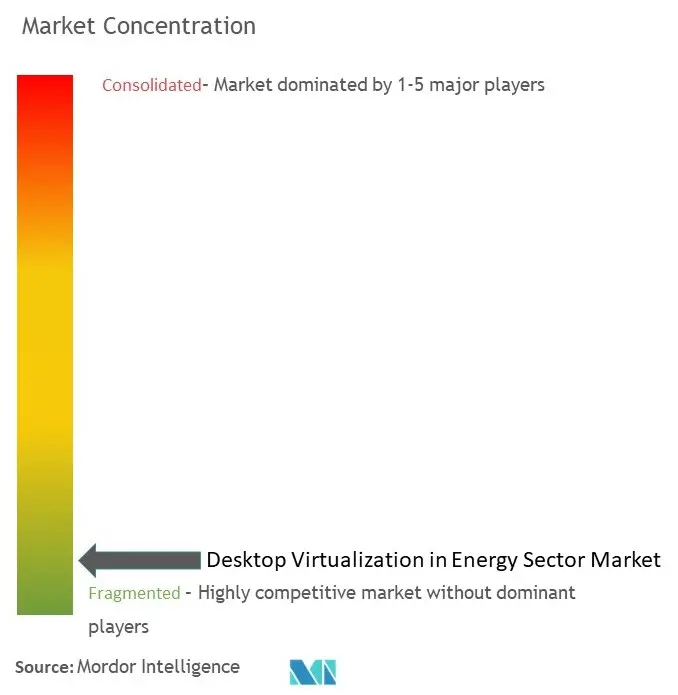
Recent Industry Developments
- May 2024: Dizzion, a firm in Desktop as a Service, has unveiled its Dizzion DaaS on the IBM Cloud Virtual Private Cloud (VPC). This collaboration allows customers to pay for their IBM Cloud consumption related to end-user computing workloads on an as-used basis. Clients of both IBM and Dizzion can leverage Dizzion’s customizable platform, which is tailored for superior service quality and the rollout of new features, such as Managed DaaS and Compliance Services (covering PCI, HIPAA, SOC, and GDPR).
- January 2024: Workspot, an Enterprise VDI platform tailored for the multi-cloud and hybrid era, announced that Siemens Energy has chosen Workspot in collaboration with Google Cloud to transform its virtual desktop infrastructure (VDI). Workspot has been instrumental in guiding Siemens Energy's shift from its outdated VDI to a contemporary platform. The company has already showcased compelling total cost of ownership (TCO) and return on investment (ROI) forecasts, familiarized stakeholders with the solution, and overseen the technical evaluation process.
Global Desktop Virtualization In Energy Sector Market Report Scope
Desktop virtualization in the energy sector allows users to access their desktop environment and applications from anywhere with an Internet connection. This means that, instead of sitting at one physical device to access files or applications, users can log into any compatible computing device and gain access to the same desktop set-up. The desktop virtualization energy sector is involved in remote operations and infrastructure monitoring.
Desktop virtualization in the energy sector market is segmented by desktop delivery platform (hosted virtual desktop and hosted shared desktop), deployment mode (on-premise and cloud), and geography (North America, Europe, Asia Pacific, and the rest of the world). The market sizes and forecasts are provided in terms of value in USD for all the above segments.
| Hosted Virtual Desktop (HVD) |
| Hosted Shared Desktop (HSD) |
| On-Premise |
| Cloud |
| North America |
| Europe |
| Asia |
| Australia and New Zealand |
| By Desktop Delivery Platform | Hosted Virtual Desktop (HVD) |
| Hosted Shared Desktop (HSD) | |
| By Deployment Mode | On-Premise |
| Cloud | |
| By Geography | North America |
| Europe | |
| Asia | |
| Australia and New Zealand |
Key Questions Answered in the Report
How big is the Desktop Virtualization In Energy Sector Market?
The Desktop Virtualization In Energy Sector Market size is expected to reach USD 15.02 billion in 2025 and grow at a CAGR of 12.43% to reach USD 26.98 billion by 2030.
What is the current Desktop Virtualization In Energy Sector Market size?
In 2025, the Desktop Virtualization In Energy Sector Market size is expected to reach USD 15.02 billion.
Who are the key players in Desktop Virtualization In Energy Sector Market?
Citrix Systems Inc., Toshiba Corporation, IBM Corporation, Huawei Technologies Co. Ltd and Microsoft Corporation are the major companies operating in the Desktop Virtualization In Energy Sector Market.
Which is the fastest growing region in Desktop Virtualization In Energy Sector Market?
Asia Pacific is estimated to grow at the highest CAGR over the forecast period (2025-2030).
Which region has the biggest share in Desktop Virtualization In Energy Sector Market?
In 2025, the North America accounts for the largest market share in Desktop Virtualization In Energy Sector Market.
What years does this Desktop Virtualization In Energy Sector Market cover, and what was the market size in 2024?
In 2024, the Desktop Virtualization In Energy Sector Market size was estimated at USD 13.15 billion. The report covers the Desktop Virtualization In Energy Sector Market historical market size for years: 2019, 2020, 2021, 2022, 2023 and 2024. The report also forecasts the Desktop Virtualization In Energy Sector Market size for years: 2025, 2026, 2027, 2028, 2029 and 2030.
Page last updated on:
Desktop Virtualization In Energy Market Report
Statistics for the 2025 Desktop Virtualization In Energy Sector market share, size and revenue growth rate, created by Mordor Intelligence™ Industry Reports. Desktop Virtualization In Energy Sector analysis includes a market forecast outlook for 2025 to 2030 and historical overview. Get a sample of this industry analysis as a free report PDF download.
